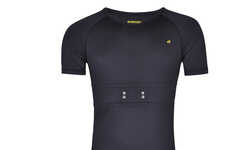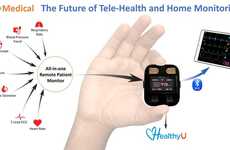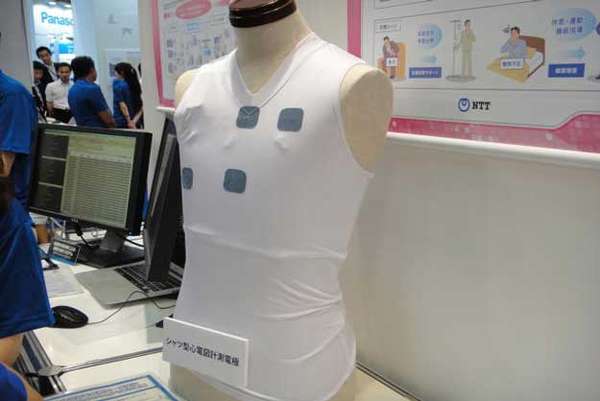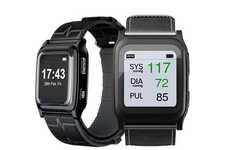
The NTT Heart Rate Monitor Undershirt is Great for Prolonged Use
Meghan Young — July 29, 2013 — Lifestyle
As PSFK points out, "Heart rate monitors aren’t the most comfortable piece of equipment to wear for extended periods of time," that is why the NTT Heart Rate Monitor Undershirt could be very revolutionary for these types of situations. It is an unobtrusive monitor that is worn under regular shirts. Devoid of wires and bulky machinery, it goes virtually undetected by the wearer and completely by casual observers.
The NTT Heart Rate Monitor Undershirt was created after experiments with coating silk and synthetic fiber surfaces with PEDOT-PSS conductive polymer. The result was a flexible electrode that could be adhered to fabric instead of people's skin, which would naturally cause irritation over time. It has many applications.
The NTT Heart Rate Monitor Undershirt was created after experiments with coating silk and synthetic fiber surfaces with PEDOT-PSS conductive polymer. The result was a flexible electrode that could be adhered to fabric instead of people's skin, which would naturally cause irritation over time. It has many applications.
Trend Themes
1. Unobtrusive Heart Rate Monitors - The trend toward wearable heart rate monitors that are as unobtrusive as possible presents an opportunity for manufacturers to focus on innovation in wearable technology.
2. Conductive Polymer Coatings - The development of flexible, conductive polymer coatings for embedding electrodes in fabrics offers opportunities for innovation in various fields of textile engineering.
3. Wearable Biosensors - The growth of wearable biosensors that can monitor vital signs such as heart rate and blood pressure represents an opportunity for the healthcare industry to explore new ways of treating and preventing diseases.
Industry Implications
1. Sportswear - Companies that specialize in sportswear could benefit from integrating unobtrusive heart rate monitors into their products, providing their customers with enhanced performance metrics.
2. Medical Devices - The medical industry could find disruptive innovation opportunities by incorporating conductive polymer coatings into wearable biosensors.
3. Health and Fitness - The health and fitness industry could use wearable biosensors to provide their clients with more comprehensive wellness plans, personalized data and monitor progress.
1.6
Score
Popularity
Activity
Freshness
























